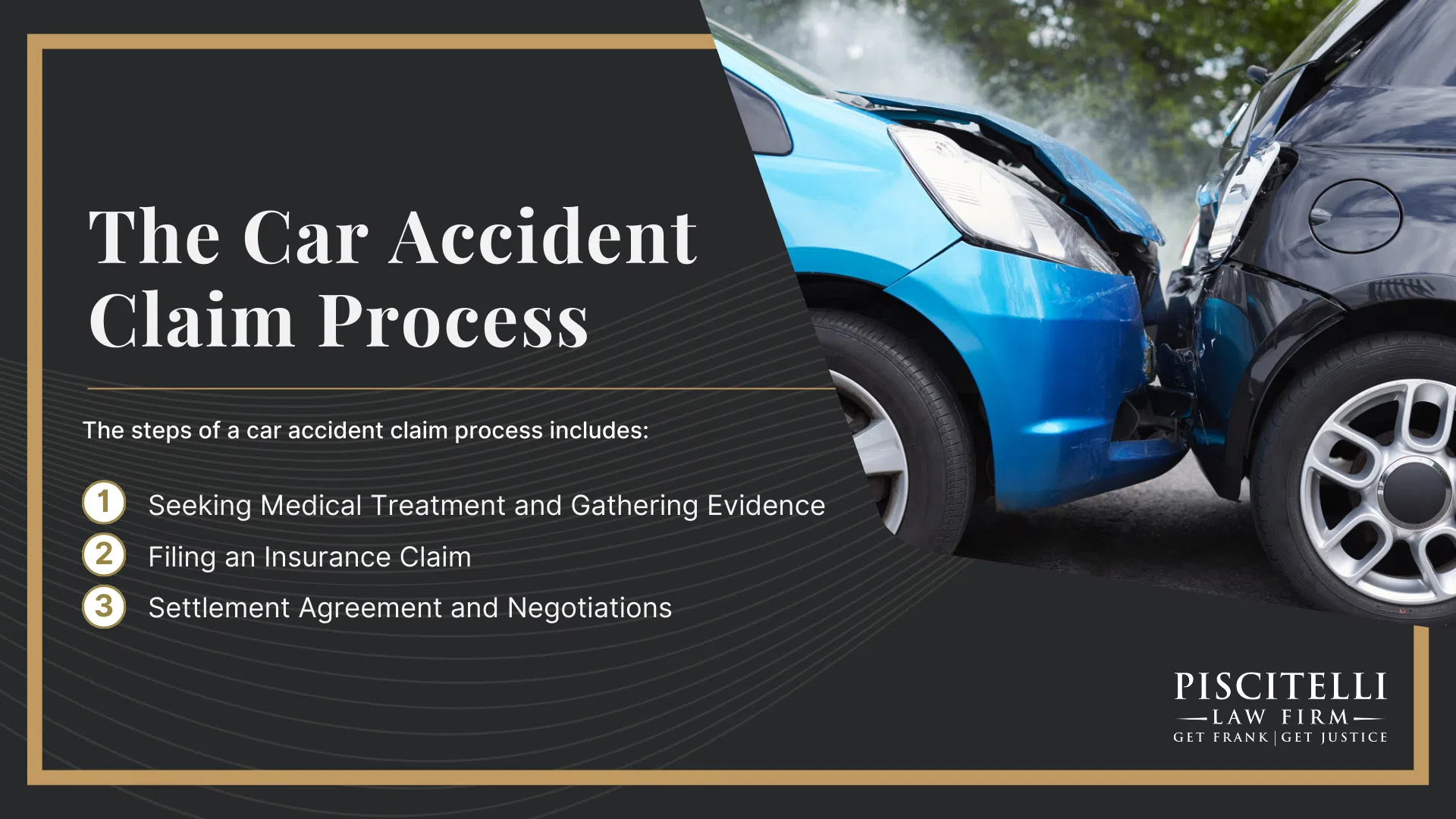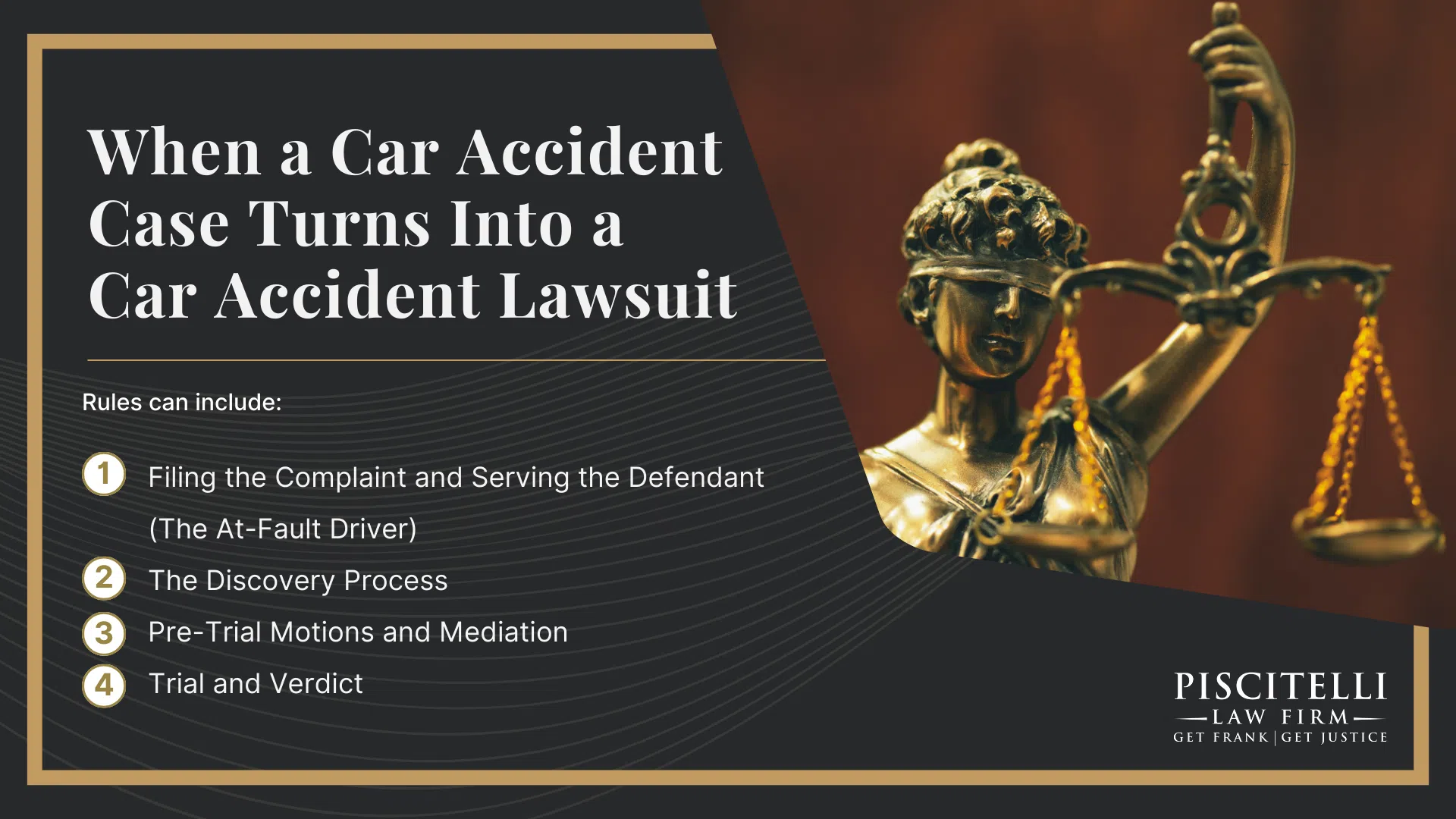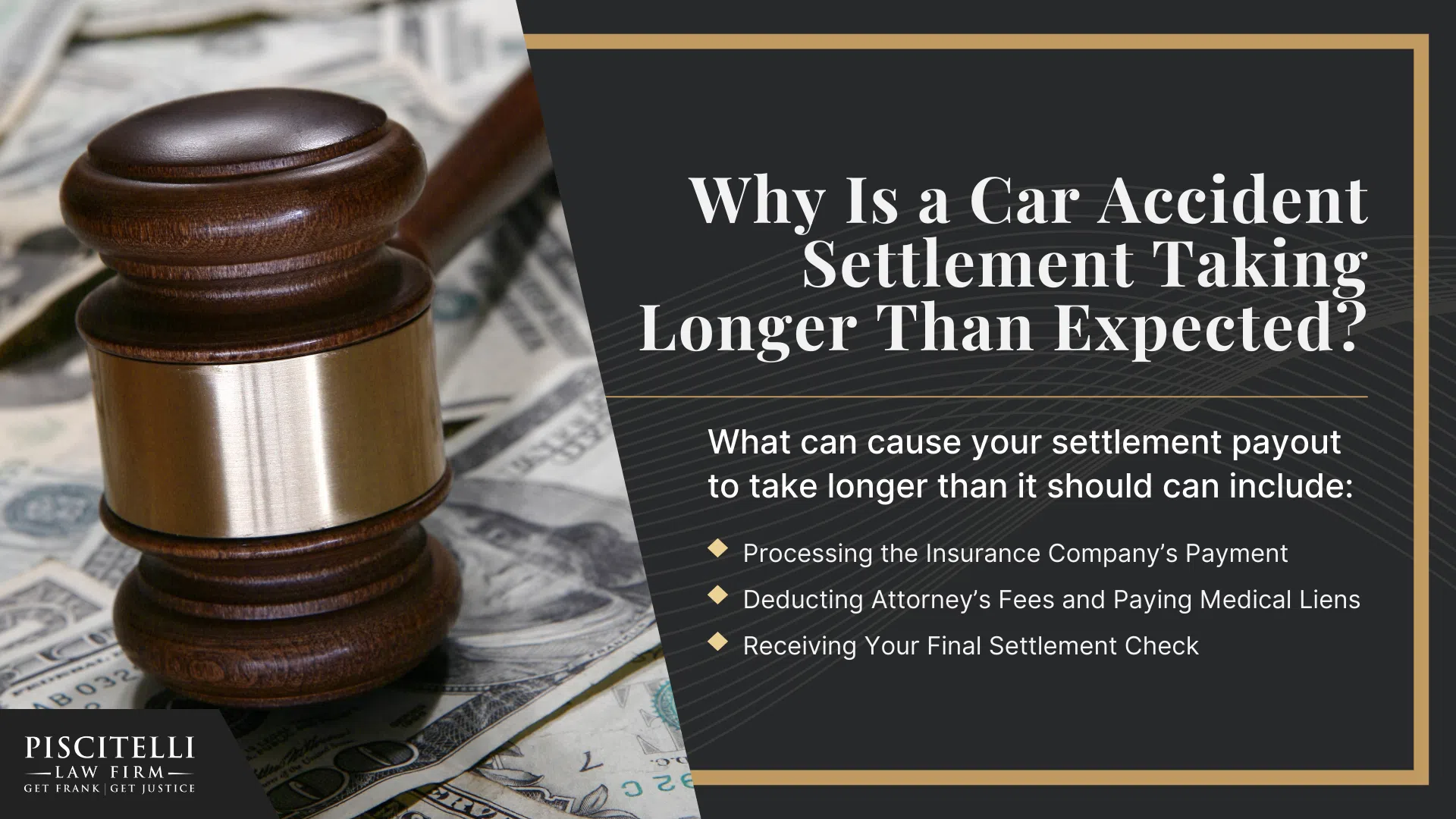Before a lawsuit is ever filed, the process begins with a car accident claim.
This is the first opportunity to resolve your case without involving the court system.

The steps of a car accident claim process includes:
- Seeking Medical Treatment and Gathering Evidence
- Filing an Insurance Claim
- Settlement Agreement and Negotiations
1. Seeking Medical Treatment and Gathering Evidence
Right after an accident, the most important thing to do is seek medical treatment.
Even if you don’t feel injured, some conditions — like whiplash or internal injuries — can take time to appear.
Waiting too long to see a doctor can weaken your claim because the insurance company may argue that your injuries aren’t related to the crash.
At the same time, gathering evidence is crucial.
This includes the police report, photos of the accident scene, witness statements, and any other documentation that helps establish what happened.
Strong evidence speeds up the claims process and improves your chances of receiving fair compensation.
2. Filing an Insurance Claim
Once you’ve received initial treatment and collected evidence, you or your attorney will file a claim with the at-fault driver’s insurance company.
The insurer will investigate the claim, which typically involves reviewing medical records, speaking with witnesses, and sometimes even sending an adjuster to inspect vehicle damage.
This process can take anywhere from a few weeks to several months, depending on how complex the case is.
If liability is clear and the damages are straightforward, the insurance company may make a settlement offer relatively quickly.
If there are disputes over who was at fault or how much your claim is worth, however, then negotiations can drag on.
3. Settlement Agreement and Negotiations
If the insurance company makes an offer, you and your attorney will review it to determine if it’s fair.
Many initial offers are too low, as insurance companies try to minimize payouts.
Your attorney will negotiate on your behalf, presenting evidence of your medical expenses, lost wages, and pain and suffering.
Negotiations can last anywhere from a few weeks to several months.
If a fair settlement is reached, you’ll sign a release form, and the insurance company will issue payment.
If the insurer refuses to offer reasonable compensation, you may need to file a lawsuit to pursue full damages.










